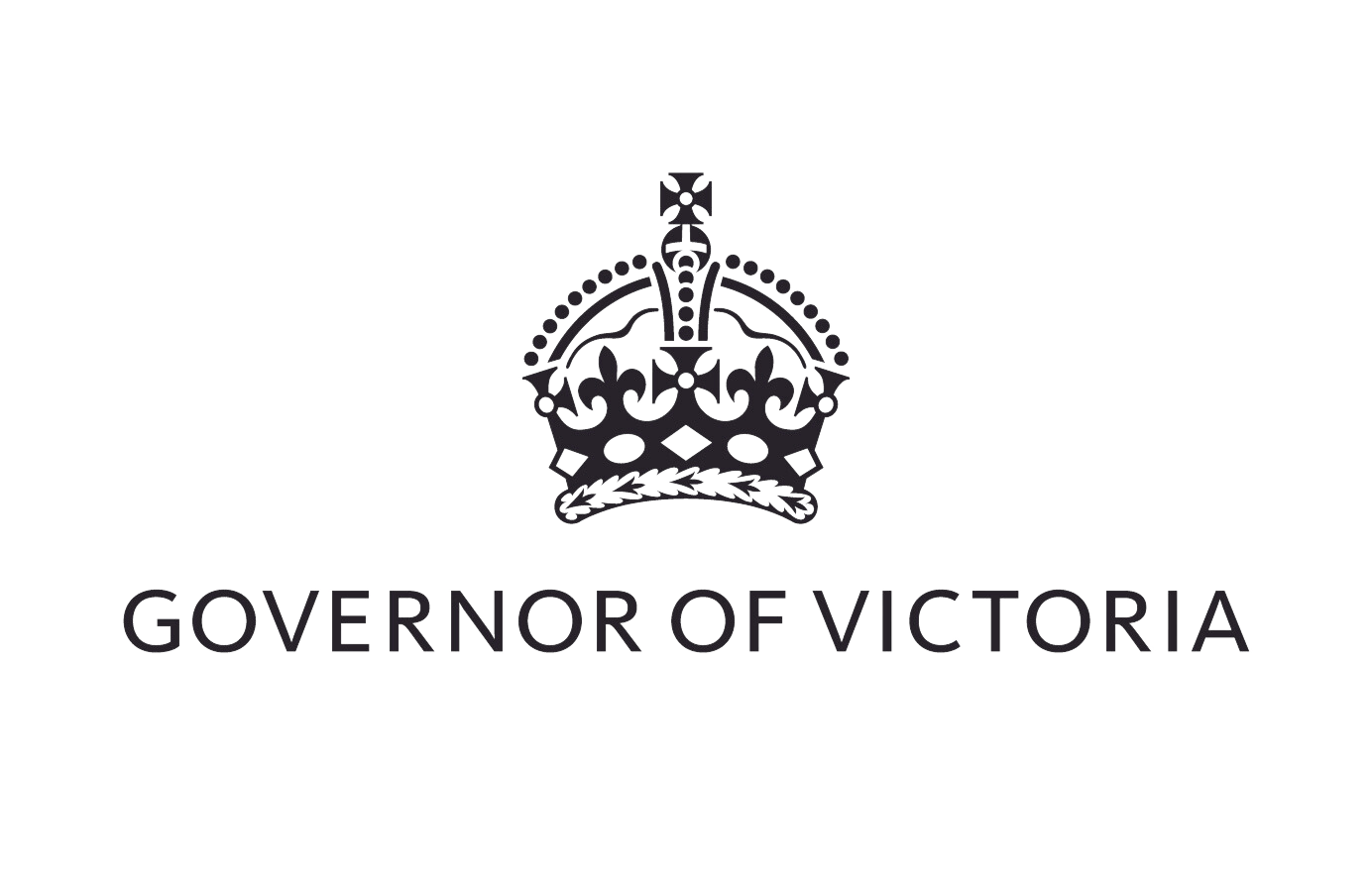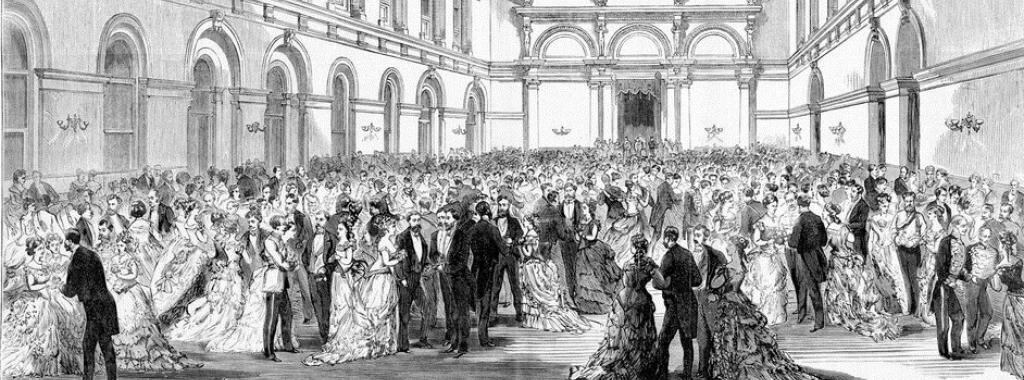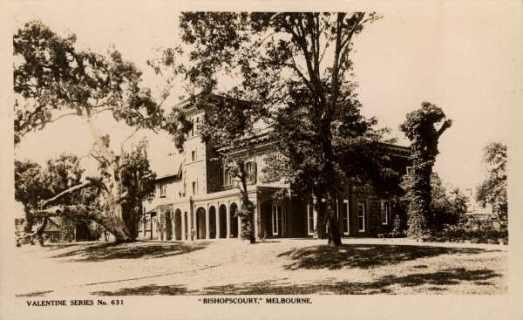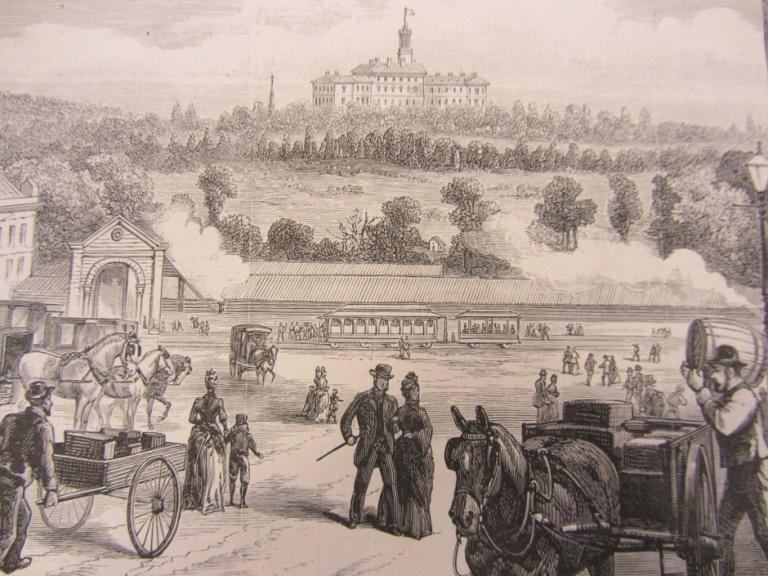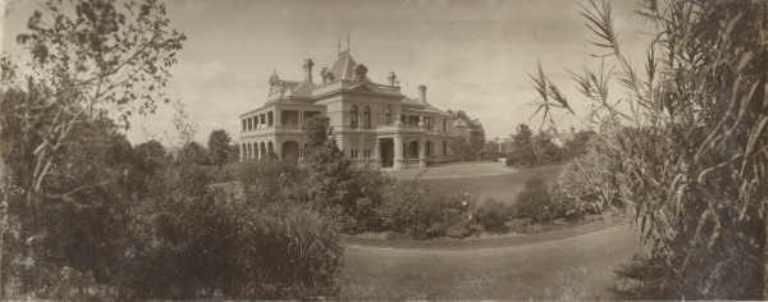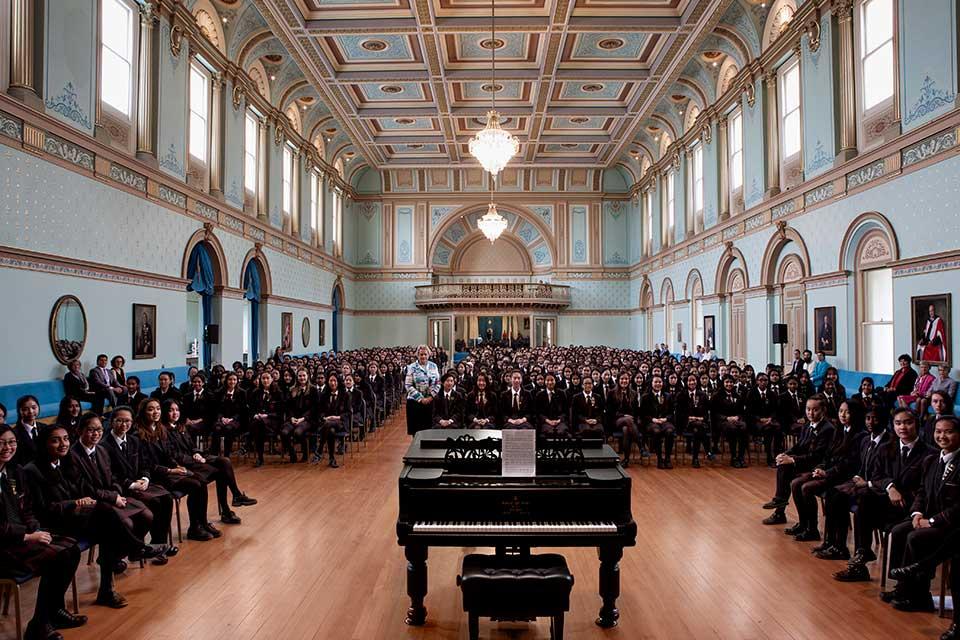La Trobe’s Cottage
1839 to 1854
Victoria’s first Government House was a prefabricated wooden building brought from England in 1839 by the then Superintendent of the Port Phillip District, Charles La Trobe, and erected on his estate 'Jolimont,' near where the Melbourne Cricket Ground is today.
La Trobe, who was promoted to Lieutenant-Governor of the new colony of Victoria in 1851, continued to live in the cottage with his family until he returned to England in 1854.
La Trobe’s Cottage has been partly reconstructed and relocated to the corner of Birdwood Avenue and Dallas Brooks Drive (near the Royal Botanic Gardens and the Shrine), Melbourne.
The cottage contains many items which belonged to La Trobe and his family.
It is open to the public and can be visited as part of a combined tour with Government House.
Toorak House
1854 to 1874
La Trobe’s Cottage was deemed unsuitable for Victoria’s first Governor, Sir Charles Hotham, so a decision was taken to temporarily lease Toorak House for £1,000 a year until a permanent Government House was built. The Toorak House property comprised 47 hectares bounded by Orrong, Kooyong and Toorak Roads, and the Yarra River.
Hotham died at Toorak House just 18 months after his arrival in the colony, and after he had tendered his resignation.
Toorak House is now owned by the Swedish Church and is the only surviving house built prior to the discovery of gold in Victoria.
Five Governors resided at Toorak House. They were:
- 1854 to 1855: Captain Sir Charles Hotham RN KCB
- 1856 to 1863: Sir Henry Barkly KCB
- 1863 to 1866: Sir Charles Henry Darling KCB
- 1866 to 1873: The Honourable Sir John Henry Thomas Manners-Sutton KCB
- 1873 to 1874: Sir George Ferguson Bowen GCMG
Bishopscourt
1874 to 1876
Lease negotiations to enable the Governor to continue to reside at Toorak House while the new Government House was completed, broke down. Therefore a temporary residence needed to be found for Governor Bowen.
The solution was to rent Bishopscourt – the East Melbourne residence of the Bishop of Melbourne, who was leaving the colony for 12 months. The Bishop sold his furniture and the Governor’s furniture was moved from Toorak House.
Today Bishopscourt is the official residence of the Anglican Archbishop of Melbourne.
Victoria's Government House
1876 to 1901
During the mid-1800s, there was debate over whether to buy an existing residence or purpose-build a new one
It was decided to build a new Government House on the land originally set aside for that purpose in 1841 by Victoria’s first Lieutenant-Governor, Charles La Trobe.
Government House was built between 1872 and 1876 during the economic boom of the Gold Rush when Melbourne was transformed from a small capital in a fledgling colony into ‘Marvellous Melbourne’.
The design was by William Wardell, Inspector General of the Public Works Department, who was commissioned in 1871 to draw up plans for a purpose-built Government House for Victoria.
In total, the construction of Government House and purchase of furnishings cost the colony £200,000. See 'The building of heritage-listed Government House.'
On 4 October 1876, Governor Bowen despatched a report to the Secretary of State for the Colonies that his family had moved into Government House.
'This is by far the largest Government-house in any colony; indeed, it is (as I am informed) twice as large as the residence of the Lord Lieutenant at Dublin. It is of Italian architecture; is erected on a commanding site, about a mile from the centre of the city of Melbourne; is surrounded by extensive terraces, gardens, and lawns; and is adjacent to the beautiful Botanic gardens … '
Five Governors resided at Government House, Domain, during this period. They were:
- 1876 to 1879: Sir George Ferguson Bowen GCMG
- 1879 to 1884: The Most Honourable George Augustus Constantine Phipps, Marquess of Normanby PC GCMG
- 1884 to 1889: Sir Henry Brougham Loch GCMG KCB
- 1889 to 1895: The Right Honourable John Adrian Louis Hope, the Earl of Hopetoun GCMG
- 1895 to 1900: The Right Honourable The Lord Brassey KCB
Stonnington Mansion
1901 to 1931
In 1901, Government House, Melbourne, became the official residence of Australia’s first Governor-General and the State Governor moved to ‘Stonnington’ in Malvern (during the era it was the Governors' residence, the spelling of the name was changed from Stonington to Stonnington).
Stonnington was built in 1890 for John Wagner, who made much of his wealth in gold mining and as a partner in the company, Cobb & Co coaches. Stonnington was designed by London-born architect Charles Abraham D’Ebro who, with his business partner John Grainger, also designed Princes Bridge and the MCG grandstand and pavilion; and who came second in a competition to design the Flinders Street Station facade.
The Victorian Government leased the property for £2,000 a year, eventually buying the house and contents in 1928 for £35,000.
A number of original Wagner furniture pieces were manufactured by W.Walker & Sons, one of London's leading firms, and a considerable quantity of furniture still exists which has a Stonnington and/or Wagner provenance.
Seven Victorian Governors resided at Stonnington. They were:
- 1901 to 1903: Sir George Sydenham Clarke KCMG FRS
- 1904 to 1908: The Honourable Sir Reginald Arthur James Talbot KCB
- 1908 to 1911: Sir Thomas David Gibson Carmichael Bt KCMG
- 1911 to 1913: Sir John Michael Fleetwood Fuller Bt KCMG
- 1914 to 1920: The Honourable Sir Arthur Lyulph Stanley KCMG
- 1921 to 1926: Colonel The Right Honourable George Edward John Mowbray Rous, Earl of Stradbroke KCMG CB CVO CBE ADC
- 1926 to 1931: Lieutenant Colonel The Right Honourable Arthur Herbert Tennyson, the Lord Somers KCMG DSO MC
Stonnington was one of the earliest houses in Melbourne to be wired for electric light.
Government House becomes a school
1931 to 1933
In 1931, the Commonwealth lease of Government House in the Domain had ended when the Governor-General's residence moved to Canberra, and the Governor’s post was vacant due to the impact of the Great Depression. The Governor’s official duties were undertaken by the Chief Justice, Sir William Irvine, who was Lieutenant-Governor.
Questions once again arose about the future of Government House, and among the proposals put forward were to turn it into a civic centre, a hospital or an art gallery and museum.
The State Government decided to temporarily provide the House to the Melbourne Girls’ High School, which was in disrepair, dangerous and in need of a new site.
On 3 February 1931, the House opened as the Melbourne Girls’ High School with 756 students.
Only minor alterations were required and the various areas of the House adapted to the new use:
- the Ballroom became the school’s assembly hall
- the Kitchen was used to teach domestic arts
- the Supper Annexe housed three classrooms
- the State Drawing Room was divided by double blackboards and held two art classes
- the State Dining Room became two classrooms
- the basement was converted into two science laboratories
- the polo field became a playground and paddocks were used for sports, however, the lawns were out of bounds to the students.
In 1933, the school moved to King Street, West Melbourne, and was later renamed The Mac.Robertson Girls’ High School.
State Government House once again
1934 to present
Stonnington was considered too far away from the city to continue being the Governor’s official residence, and the decision was taken to reinstate the Government House in the Domain.
With the Governor’s position filled, after a two-year absence, with the appointment of Lord Huntingfield, the House returned to its original purpose and has remained so.
Today, it is the residence of the Governor; the primary venue for the Governor's constitutional, ceremonial, community and international engagement activities; and the workplace of the Office of the Governor.
Major repair works were required to Government House following a severe hailstorm in 2010. Water flooded into the Private and State Apartments, and damage was recorded in more than 60 rooms.
Governors who have resided at Government House since 1934 are:
- 1934 to 1939: Captain The Right Honourable William Charles Arcedeckne, the Lord Huntingfield KCMG
- 1939 to 1949: Major-General Sir Winston Joseph Dugan GCMG CB DSO
- 1949 to 1963: General Sir Reginald Alexander Dallas Brooks KCB CMG DSO
- 1963 to 1974: Major General Sir Rohan Delacombe KCMG KCVO KBE CB DSO
- 1974 to 1982: The Honourable Sir Henry Winneke AC KCMG KCVO OBE
- 1982 to 1985: Rear-Admiral Sir Brian Murray KCMG AO
- 1986 to 1992: Dr J Davis McCaughey AC
- 1992 to 1997: The Honourable Richard E McGarvie AC QC
- 1997 to 2000: The Honourable Sir James Augustine Gobbo AC CVO QC
- 2001 to 2006: The Honourable John Landy AC CVO MBE
- 2006 to 2011: Professor the Honourable David de Kretser AC
- 2011 to 2015: The Honourable Alex Chernov AC QC
- 2015 to 2023: The Honourable Linda Dessau AC CVO
- 2023 to present: Her Excellency Professor the Honourable Margaret Gardner AC
